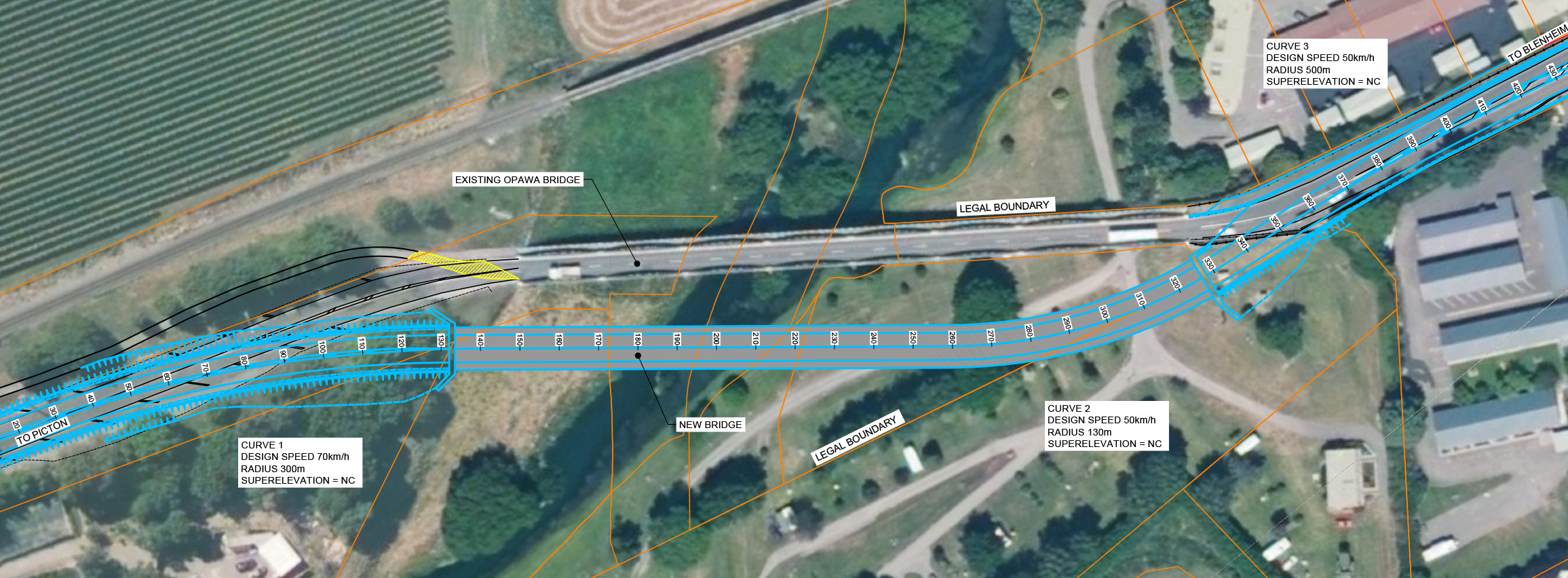In October 2016, we confirmed our preference for the preferred option following community engagement feedback and the completion of the Detailed Business Case. The preferred option minimises the effect on buildings on neighbouring property.
The Detailed Business Case included reviews of mitigation for impacts on property, constructing a curved structure versus a straight one, and a further test on the upstream versus downstream location.
The result is that the Detailed Business Case recommends the construction of a two-lane 180-190m long partially curved bridge, alongside the existing heritage bridge that will provide walking and cycling facilities. This work is included as part of the Government’s Accelerated Regional Roading Programme and funded by the Future Investment Fund.
View the complete Detailed Business Case [PDF, 18 MB]
The proposed preferred option

View larger version of SH1 Ōpaoa river bridge replacement option [JPG, 1.3 MB]
As part of our investigation, we developed a long list of all possible options to address the two problems. Thirteen separate options were investigated and assessed, including a do-nothing option, using a variety of criteria. You can read more about all of the options and the detailed analysis in the ‘Consideration of Options’ Report [PDF, 7.6 MB]
Taking into account all of the information investigated to date, including stakeholder, iwi, and affected landowner feedback, the preferred option is to build a new 10.8m wide bridge. This will operate as a full two-lane highway and cater for on-road cyclists with a 1.5m wide shoulder on each side.
We will keep the existing bridge as a pedestrian and cycle only facility. A western alignment (upstream) has the least impact on surrounding properties, provides better pedestrian and cyclist access, and requires less property acquisition.
This option resolves the identified problems and meets all criteria for vehicular traffic.
It is estimated to cost between $14 and $17.5 million.
Bridge design

Indicative drawings of the new bridge have been prepared and are included in the Detailed Business Case [PDF, 18 MB]
The new bridge will be a multi-span concrete or steel / concrete composite structure on a curved alignment (see link above for indicative look). The bridge will have concrete and steel barriers for side protection and an asphaltic concrete road surfacing.
Community feedback about the preferred look of the bridge indicated residents wanted it to be simple, cost effective, have the character of the existing bridge, and be functional and safe. The design has taken these factors into account while also meeting engineering requirements due to the partial curve in the route over the river. The character of the existing heritage bridge still dominates the landscape in the area while the new bridge meets the functional requirements.
Benefits of investment
The specific benefits of investing to address the Opawa Bridge’s identified problems (including weightings) are:
- Benefit 1 (70%): Increased throughput of freight and light vehicles and greater certainty of state highway journey
- Benefit 2 (30%): Greater structural resilience to natural hazard events, resulting in increased availability and access.
